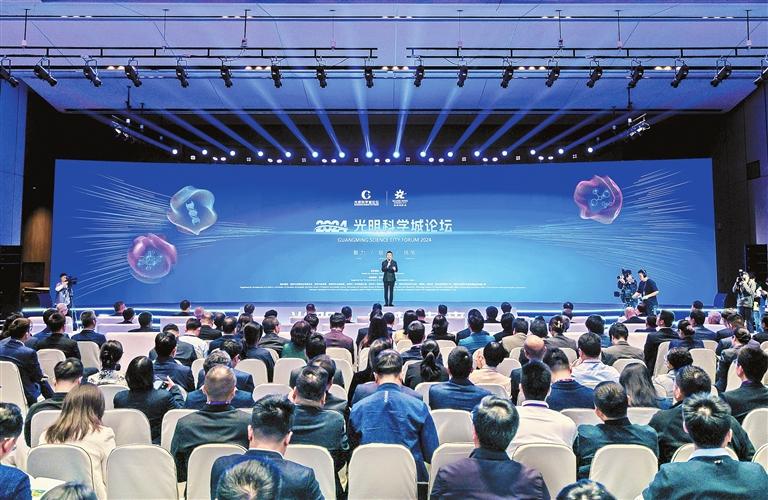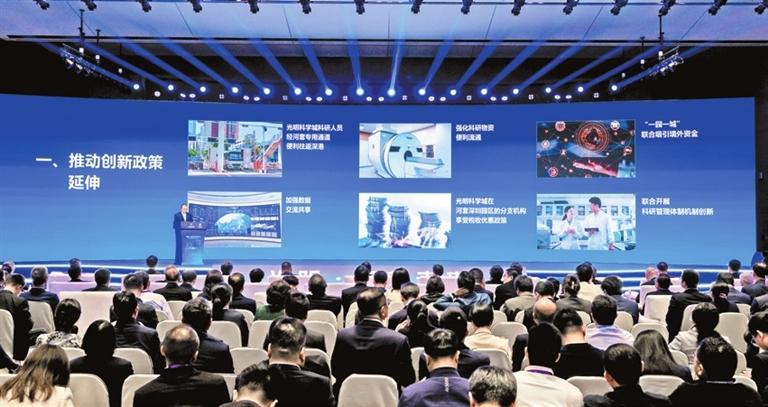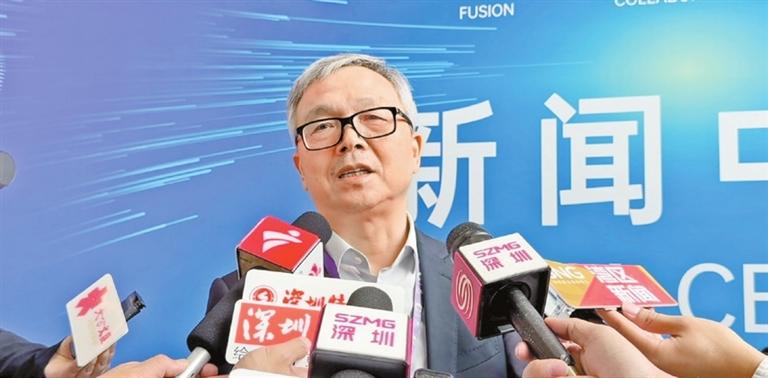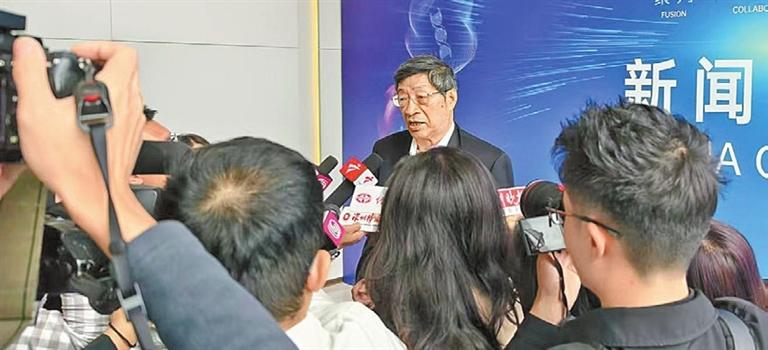



Editor’s note: Shenzhen is composed of nine administrative districts, one new area, and the Shenshan Special Cooperation Zone in Shanwei. While all 11 areas share Shenzhen’s defining spirit of innovation, each has its own unique characteristics. This page focuses on the latest developments in Guangming Science City, a key hub for innovation and research in Guangming District. Located in northern Shenzhen, Guangming is a rapidly developing area with a thriving economy and a strong focus on scientific and technological research. Its annual Guangming Science City Forum has become one of the city’s signature events in science and technology. Windy Shao windysjf@hotmail.com A COLLABORATION mechanism between the Shenzhen Park of the Hetao Shenzhen-Hong Kong Science and Technology Innovation Cooperation Zone and Guangming Science City was announced during the opening ceremony of the Guangming Science City Forum 2024 on Dec. 5, signaling a new era of collaboration and innovation. The forum also witnessed the official launch of high-resolution and high-pressure neutron diffractometers at the China Spallation Neutron Source (CSNS) — a collaboration between Guangming Science City and Songshan Lake Science City. These developments serve as a symbol of cross-border cooperation and mutual growth in cutting-edge scientific endeavors within the Guangdong-Hong Kong-Macao Greater Bay Area (GBA). Collaboration between Guangming and Hetao In recent years, Shenzhen has witnessed the establishment of Guangming Science City in the north and the Shenzhen Park of the Hetao cooperation zone in the south, marking a new phase of collaborative innovation characterized by distinctive strengths, complementary progress, and seamless coordination. Guangming Science City has been developed with a focus on crucial facilities, key institutions, and pivotal platforms, which will provide the “hardware” support for technological breakthroughs. Simultaneously, the Shenzhen Park of the Hetao cooperation zone has used preferential policies to lay the foundation for a conducive “software” environment that facilitates the efficient flow of innovative elements, fostering closer ties with Hong Kong in alignment with international scientific research standards. These initiatives have woven a robust innovation chain aimed at transitioning from groundbreaking research to pilot projects and industrial applications. The combined efforts aim to establish a world-class cluster of research facilities that will drive advancements in industries such as new materials, emerging energy technologies, and biomedicine. Zhu Yun, deputy director of the Shenzhen Municipal Development and Reform Commission, announced the collaborative mechanism for Hetao’s Shenzhen Park and Guangming Science City on Dec. 5. This collaboration focuses on various areas such as innovation policies, major facilities, institutional platforms, industrial development, and infrastructure development. The mechanism outlines specific plans for the “soft connection” of key research elements like personnel, finances, materials, and data. Researchers based in Guangming Science City will benefit from a specialized channel facilitating seamless travel to and from Hong Kong, enabling the exchange of research materials, data, and essential resources. Tax incentives for branch institutions of Guangming Science City at the Shenzhen Park will be provided in accordance with laws and regulations, according to the mechanism. The Shenzhen Park and Guangming Science City are encouraged to make joint efforts in attracting foreign capital and innovating in scientific research management mechanisms. Regarding the “hard connection,” the mechanism emphasizes accelerating the transformation of transportation infrastructure, such as the Longda Expressway and Nanguang Expressway, opening up low-altitude short-haul transport routes, and reducing travel time and distance between Guangming Science City and the Shenzhen Park, as highlighted by Zhu. Yang Xueming, an academician of the Chinese Academy of Sciences and vice president of the Southern University of Science and Technology, Shenzhen (SUSTech), mentioned during a media session Dec. 5 that many major science and technology infrastructure projects in Shenzhen are located in Guangming. As these facilities are open to institutions in the GBA, the whole country, and even globally, cooperation between Hetao and Guangming Science City becomes crucial. He expressed hope that more of the preferential policies applied in Hetao can be implemented in Guangming to facilitate further collaboration in research, device construction, and international partnerships. Earlier this year, Guangming Science City established an operation center in Hong Kong, highlighting its commitment to cross-border collaboration and information sharing. The center aims to provide an essential gateway for Hong Kong research institutes to share research platforms and collaborate on technology projects with major scientific infrastructure in Guangming. Science cities partner In July 2020. The National Development and Reform Commission and the Ministry of Science and Technology gave the green light for the establishment of a pilot area for a comprehensive national science center in the GBA, including both Guangming Science City in Shenzhen and Songshan Lake Science City in neighboring Dongguan. In July this year, Guangming Science City and Songshan Lake Science City signed an agreement to forge a strategic partnership. With a focus on shared scientific resources, collaborative technological research, and coordinated industrial growth, this initiative aims to foster a unified research ecosystem that encourages innovation and fruitful partnerships. During a science city forum press conference Dec. 3, it was revealed that a feasibility study is underway for the construction of an expressway linking Guangming Science City and Songshan Lake Science City. On Dec. 5, the Guangming Science City Forum hosted the official launch of a remarkable achievement in collaboration ─ high-resolution and high-pressure neutron diffractometers at the China Spallation Neutron Source (CSNS). As the first major scientific facility in the GBA, CSNS plays a crucial role in bridging gaps in pulse neutron technology, and it has earned the moniker of a “super microscope.” During a media session, professor Chen Hesheng, an academician of the Chinese Academy of Sciences and head of command at CSNS, highlighted the joint development of these diffractometers by CSNS in Dongguan and the material genome big-science facilities in Guangming. He emphasized their precision in studying microscopic processes, citing the potential to revolutionize the development of energy storage technology, particularly in enhancing lithium batteries for automotive use. “We are confident that this innovation will significantly contribute to the advancement of new energy solutions in the country, including hydrogen fuel,” remarked Chen. | 
